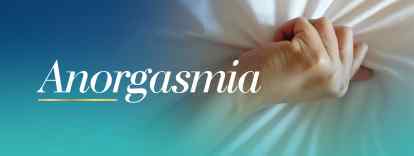The Elusive Female Orgasm

Female orgasms are the typically the result of foreplay, arousal and sexual stimulation. It’s the climactic and euphoric event that we come to crave and desire which helps to build sexual intimacy amongst partners. It's that final chemical rush of the feel-good neurotransmitter, dopamine, that wires our brain to keep us coming back for more. And most of us take it for granted.
Female Sexual Dysfunction (FSD) describes a whole host of categories of sexual disorders ranging from those no longer feeling sexual desire known as Hypoactive Sexual Desire Disorder (HSDD), to those not being able to orgasm, Female Orgasmic Disorder (FOD). In fact, it’s estimated that sexual dysfunction will affect up to 42% of women in their lifetimes, and 10-15% will face issues with their inability to orgasm. To make matters worse, there are very few commercially available treatment options available for these issues, and the few that exist can be out of reach as costs for many as they may run in excess of $400-600 for a few days of therapy.
Even more complicated is the clinical diagnosis of FOD. Diagnosing orgasmic disorders can often be difficult since the inability to orgasm can stem from a variety of issues. For example, studies show that more than 50% of married women claim to have arousal or orgasm problems. Issues associated with these disorders may range from trust issues within the partnership which may inhibit desire, arousal, and orgasm - to issues resulting from the aging effects of declining hormones often seen in perimenopausal and menopausal women who often struggle with painful vaginal sex due to thinning of the vaginal lining and decreased vaginal lubrication attributed to low levels of estrogen. It’s important to get to the root cause here since each of these issues will have their own treatment solutions.
Your physician will diagnose FOD by confirming that you have at least a six-month consistent reduction in intensity, delay, infrequency or absence of orgasm which is not associated with other physical, mental, or relationship issues. That means that if you are going through menopause or are experiencing relationship issues, you may not qualify for a diagnosis of FOD. Although the causes of FOD can be very complex and vary drastically, the presence of distress is crucial for proper diagnosis. It’s also important to note that as social and cultural norms often silence these discussions, more than half of women diagnosed with FOD also have symptoms of depression.
Since there are no commercially available treatment options for FOD, and with financial factors being a hindrance, many doctors and nurses are turning to Harbor Compounding Pharmacy for its cutting-edge, clinically researched medical solutions for female anorgasmia. As part of our open conversation on the management of female sexual health, we have researched and formulated 5 novel products where the individual ingredients and routes of administration have been clinically studied to help women increase the quality of their sexual lives. The following section highlights a unique alternative for FOD using Testosterone Intranasal spray.
Endogenous testosterone levels in women are responsible for the maintenance of the female genital system, such as nipples, labia majora, and the clitoris. Furthermore, low testosterone in women is associated with decreased activity in the amygdala – the part of the brain which is responsible for emotion circuitry, identification of the emotional significance of stimuli, generation of an affective response (general psychological state), and emotion regulation. Therefore, the presence of testosterone in women may be the single most important determinant of sexual readiness and mood, and has been positively linked to orgasm.
Here is what we learned and how we may be able to help you!
Study 1
In a Phase II clinical trial by Laan, et al, intranasal testosterone was studied for hypoactive sexual desire disorder (HSDD) and female orgasmic disorder (FOD) in 59 patients. Of the patients diagnosed with FOD and treated with intranasal testosterone, 40% of the treatment group reported experiencing an orgasm or sensations indicative of an orgasm for the first time. Women treated with intranasal testosterone also reported more intense feelings of sexual arousal after stimulation and showed an increased genital response.1
Study 2
In another study by van Gorsel, et al, patients treated with intranasal testosterone had significantly higher vaginal pulse amplitude (VPA) responses as soon as 30 minutes following administration in FOD patients. VPA measures the pressure change of the blood vessels within the vagina, which indicate a sexual response.2
When comparing the intranasal route to the intravenous route for testosterone application, Banks, et al, found that even though both routes deliver testosterone throughout the whole body, intranasal testosterone reaches concentrations in the brain at levels almost twice as high as the Intravenous (IV) route.3 Since the goal of this therapy is to activate central sexual mechanisms in the brain, applying testosterone as a cream may not give you the same effects as an intranasal spray.
Harbor Compounding Pharmacy’s compounded Intranasal Testosterone solution is trusted by prescribers and patients nationwide, including California, Nevada, Colorado, Washington, Missouri, and Indiana. Call Harbor Compounding Pharmacy today at (949) 642-0106 to speak to one of our pharmacists about Intranasal Testosterone therapy. We may be able to request a prescription for Intranasal Testosterone from your doctor or refer you to one of the medical experts we work with.
Learn more about Testosteorne Intranasal Spray.



